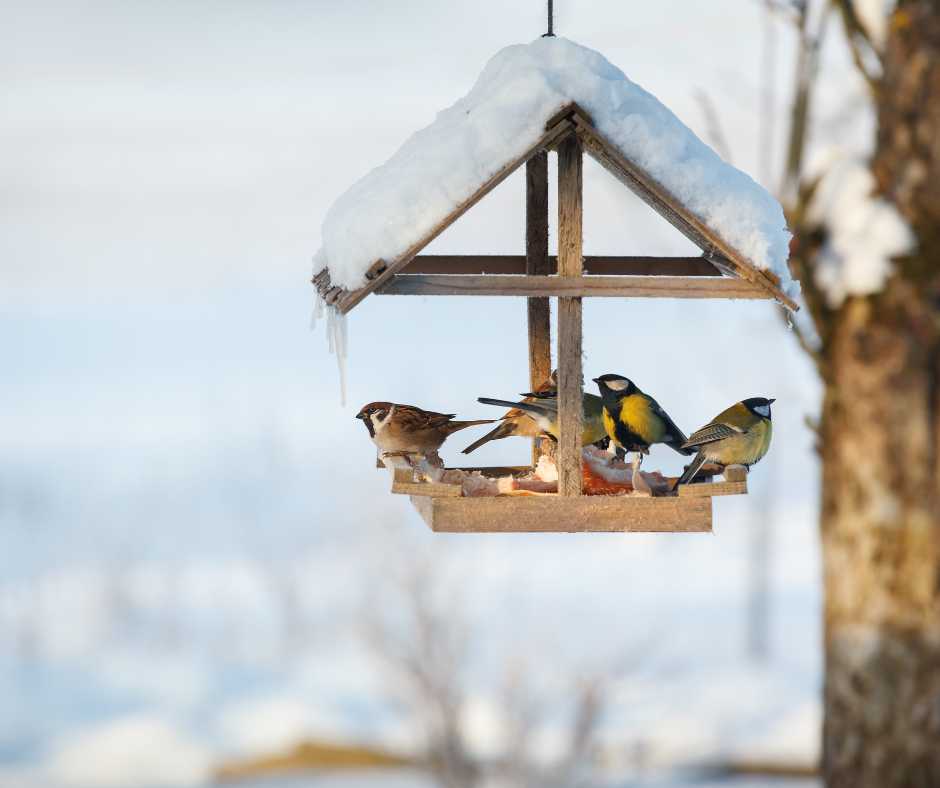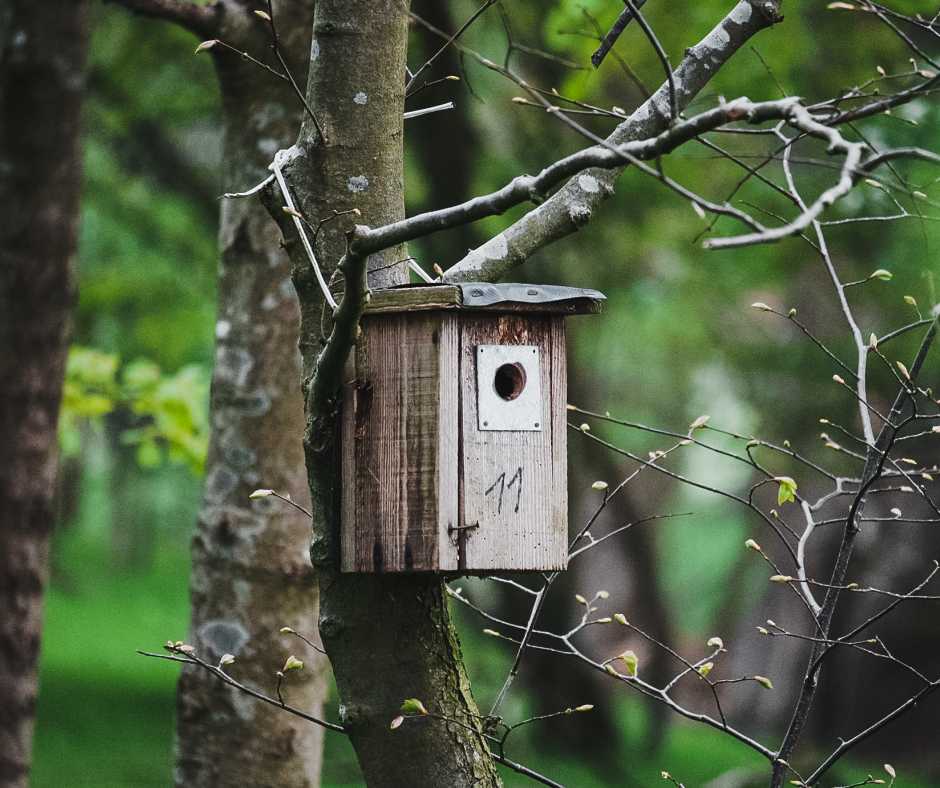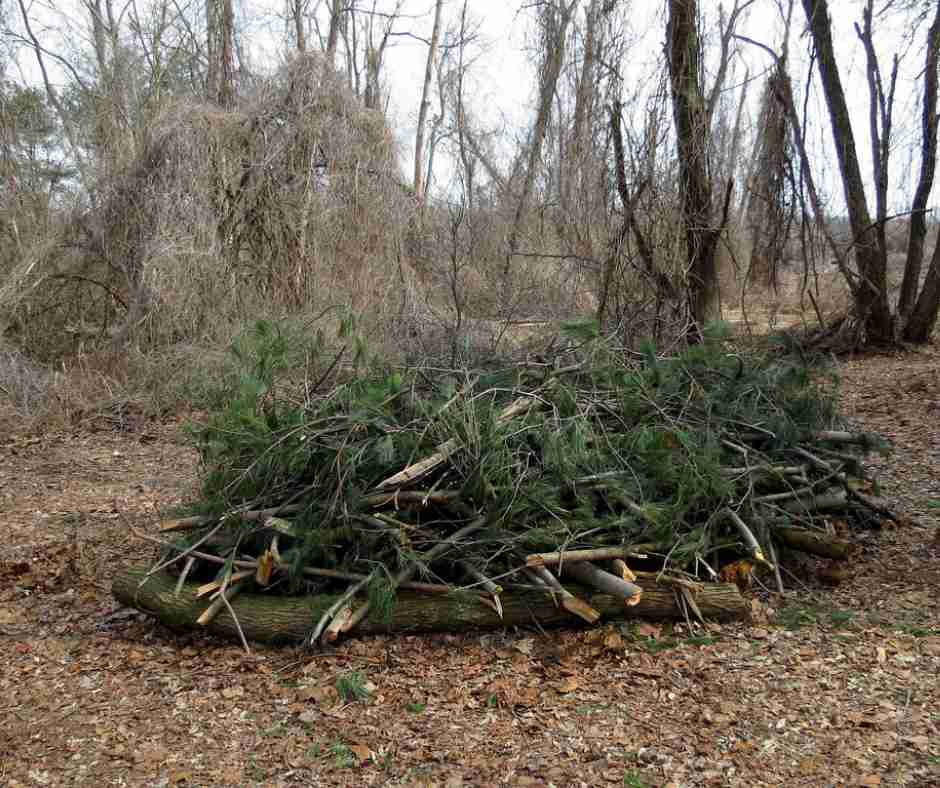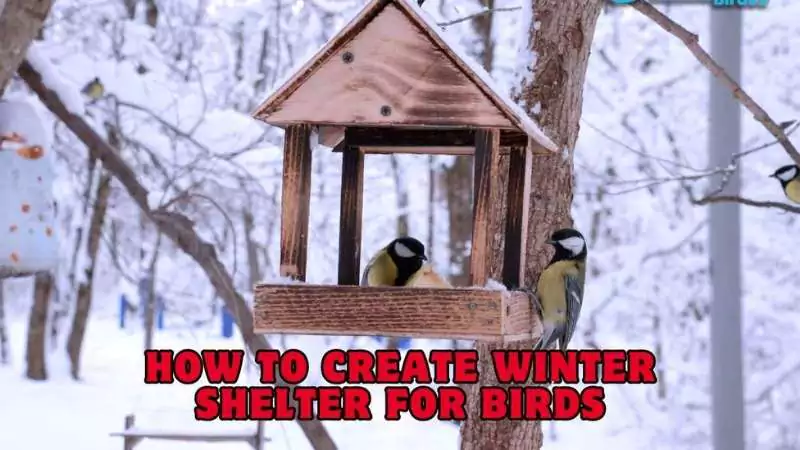Did you know that many birds, instead of migrating, brace themselves against the harsh winter right in our backyards? This surprising resilience highlights a crucial problem: these birds desperately need shelter to survive the chilly months.
But how to create winter shelter for birds?
Create winter shelters for birds using natural covers like evergreens and brush piles, and artificial shelters like DIY roosting boxes with recycled insulation. Maintain these shelters well, provide food and water, and keep pets at a safe distance for bird safety.
This blog explores creating winter bird shelters, covering everything from natural refuges to DIY hideouts. You’ll find easy instructions, helpful tips, and the joy of aiding birds. Get ready to positively impact our local feathered friends this winter! Let’s start this rewarding journey!
Understanding Birds’ Winter Needs
So, let’s talk about what our feathered friends really need when the mercury dips. Picture this: It’s like you’re out camping in the deep freeze of winter – you’d want a snug tent, a warm sleeping bag, and a hot meal, right? Well, birds need pretty much the same things during winter: shelter, warmth, and food.
They face some tough challenges – freezing temps, finding enough grub to keep their tiny bodies fueled, and steering clear of predators who are also struggling in the cold. Plus, imagine trying to sleep in a tree when it’s snowing! Brrr, right?
That’s why a cozy shelter is like a dream come true for them. It’s not just about staying out of the snow; it’s about survival. And that’s where we come in – building shelters and providing food to help them through these tough times. Let’s be the heroes our winged pals need this winter!

Types of Winter Shelters for Birds
Natural Shelter Options
1. Planting Dense Foliage and Evergreens: Trees like pines and spruces are like winter condos for birds. Planting these in your yard gives birds a natural hideout from the cold. Check out this cool guide from Audubon on the best trees for bird shelters.
2. Creating Brush Piles and Wood Stacks: Got some fallen branches? Pile them up! Brush piles are like rustic bird hotels, offering both shelter and snacks in the form of bugs.
3. Utilizing Natural Land Features: Sometimes, the best shelters are already in your backyard. Look for natural nooks and crannies that birds can use.
Artificial Shelter Solutions
1. Building DIY Roosting Boxes: This is a fun weekend project. With some basic tools and this handy guide, you can build a cozy box for your winged pals.
2. Upcycling Materials for Insulation: Old blankets or even newspapers can be great insulators for birdhouses. Just make sure they stay dry!
3. Designing Weather-Resistant Feeding Stations: Birds need to eat, especially in winter. Setting up a feeder with a roof keeps the snow out and the birdseed dry. Here’s a video guide on making your feeder winter-ready.
Here are a video tutorial for you:
4. Innovative Use of Household Items: Have you ever thought of turning an old teapot into a birdhouse? It’s quirky, fun, and super helpful for birds!
Step-by-Step Guide to Creating Bird Shelters
Building a Roosting Box
Materials Needed: Get some untreated wood, a saw, nails, a hammer, and natural insulation like wood shavings. You might also want a ruler and pencil for accurate measurements.
Cut and Assemble:
- Measure and cut the wood into six pieces for the sides, bottom, top, and back.
- Nail these pieces together to form a simple box.
- Remember, precision matters – this is going to be a cozy winter home for the birds!
Add the Entrance and Perches: Near the bottom of one side, cut a small entrance hole – about 1.5 to 2 inches in diameter is ideal for small birds. Inside, add a few perches by nailing small sticks or dowels.
Insulate and Place: Line the bottom of the box with wood shavings for insulation. Find a quiet and sheltered spot in your garden, preferably facing away from prevailing winds, and securely mount your roosting box. It’s like opening a new boutique hotel for your feathered guests!

Creating a Brush Pile
Gather Materials: Look for fallen branches, twigs, leaves, and even old Christmas trees. The more variety, the better – it adds to the pile’s natural appeal.
Choose a Location: A quiet corner of your yard, away from foot traffic and strong winds, is ideal. Proximity to other natural shelters like bushes or trees is a bonus.
Build the Base:
- Start with the largest branches to form a sturdy base.
- Layer smaller branches, twigs, and leaves.
- Think of it as building a natural fortress – the denser, the better.
Top with Leaves and Small Twigs: Add a final layer of leaves and small twigs for insulation. Sprinkle some birdseed initially to attract birds and encourage them to explore their new shelter.
Read More: How to Make a Bird Nest

Winterizing a Nesting Box
Clean Out Old Nests: Start with a clean slate by removing old nesting materials. It reduces the risk of parasites and gives birds a fresh start.
Seal and Insulate: Close any ventilation holes with removable materials. Add a thick layer of insulation like straw or wood shavings. It’s similar to putting a warm blanket inside the box.
Reposition the Entrance: Move the entrance to the lower part of the box to retain heat. It’s a small tweak that can make a big difference in keeping the interior warm.
By following these steps, you’ll create not just shelters but warm, welcoming environments that will significantly help birds during the winter.
Additional Ways to Support Birds in Winter
Apart from cozy shelters, there’s more we can do to be bird buddies in winter. Think about it – how would you feel if your fridge was empty on a snowy day?
Birds face this all the time. So, setting up a bird feeder is like throwing a lifeline. Stock it with seeds and suet – it’s like a buffet for birds! And water, oh boy, finding unfrozen water is tough for them.
A simple birdbath with a small heater or even just changing the water regularly can be a game-changer. Imagine their joy at finding a spot for a drink and a splash!
Let’s not forget that keeping our furry friends – yes, I’m talking about pets – at a safe distance from these areas is also key. Safety first, right?
Read more: How to Clean Bird Feeder

Safety and Maintenance of Bird Shelters
Think of maintaining bird shelters as caring for a mini wildlife sanctuary. It’s crucial to regularly inspect them for damage and cleanliness, just like ensuring a guest room is spotless and cozy.
Keeping these shelters safe from predators, like placing them high or in hard-to-reach spots, is akin to offering a VIP experience for our feathered friends. This not only keeps them secure but also turns your yard into a preferred bird haven year-round. It’s like being the best innkeeper in the bird world!
People Also Asked
What are the best materials for insulating a homemade bird shelter?
Natural insulators like wood shavings, straws, or even leaves are great for keeping bird shelters warm. Just make sure they’re dry and free from chemicals.
How can I encourage birds to use my newly built shelters?
Place the shelters in quiet, sheltered spots and add some bird seed nearby to attract them. Once a few birds start using it, others will likely follow.
What maintenance do bird shelters require after winter?
Give them a good clean in early spring, remove any insulation, and repair any damage. It prepares them for use in the coming nesting season.
Are there specific designs for bird shelters that attract different species?
Yes, different species have varying preferences. For example, small entrance holes are great for tiny birds like chickadees, while larger species might need more space. Researching birds in your area can help tailor your design.
Wrap Up
Creating winter shelters for birds is an act of kindness that brings life and joy to your frosty garden. It’s a chance to play an active role in nature’s cycle right from the comfort of your home. So, let’s roll up our sleeves and help our feathered friends this winter – one shelter at a time!

